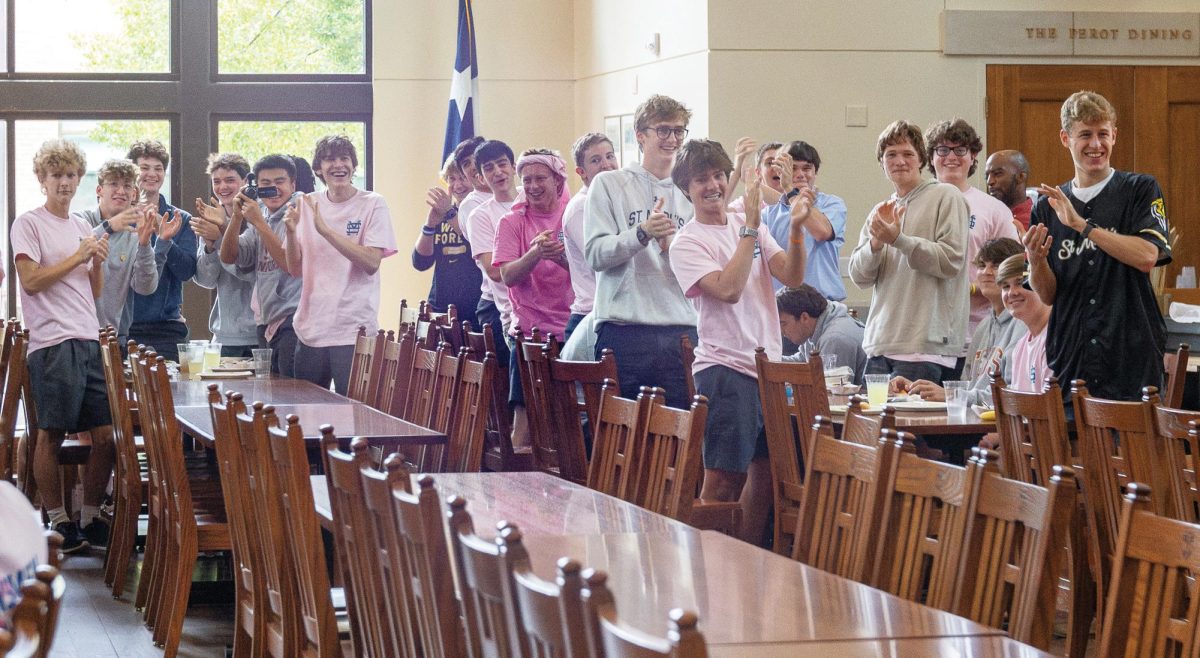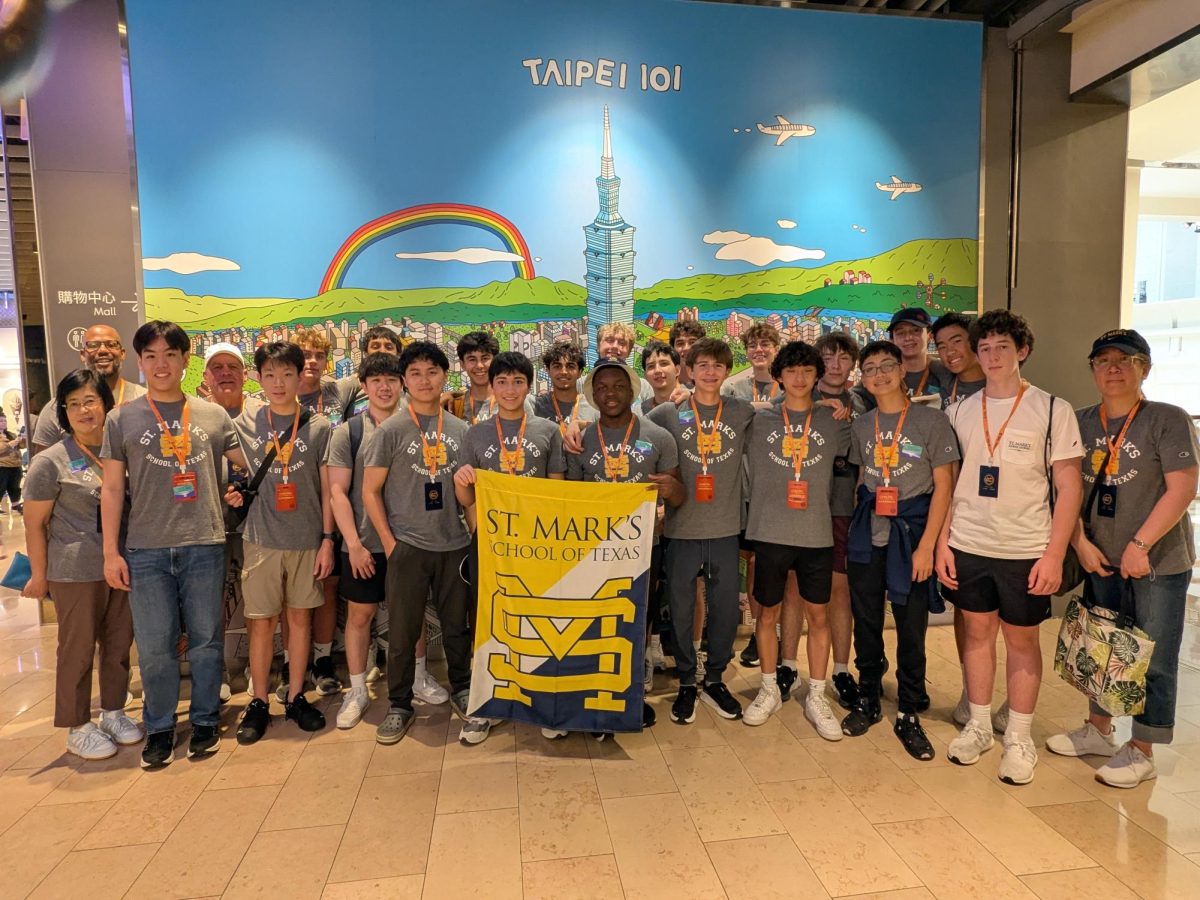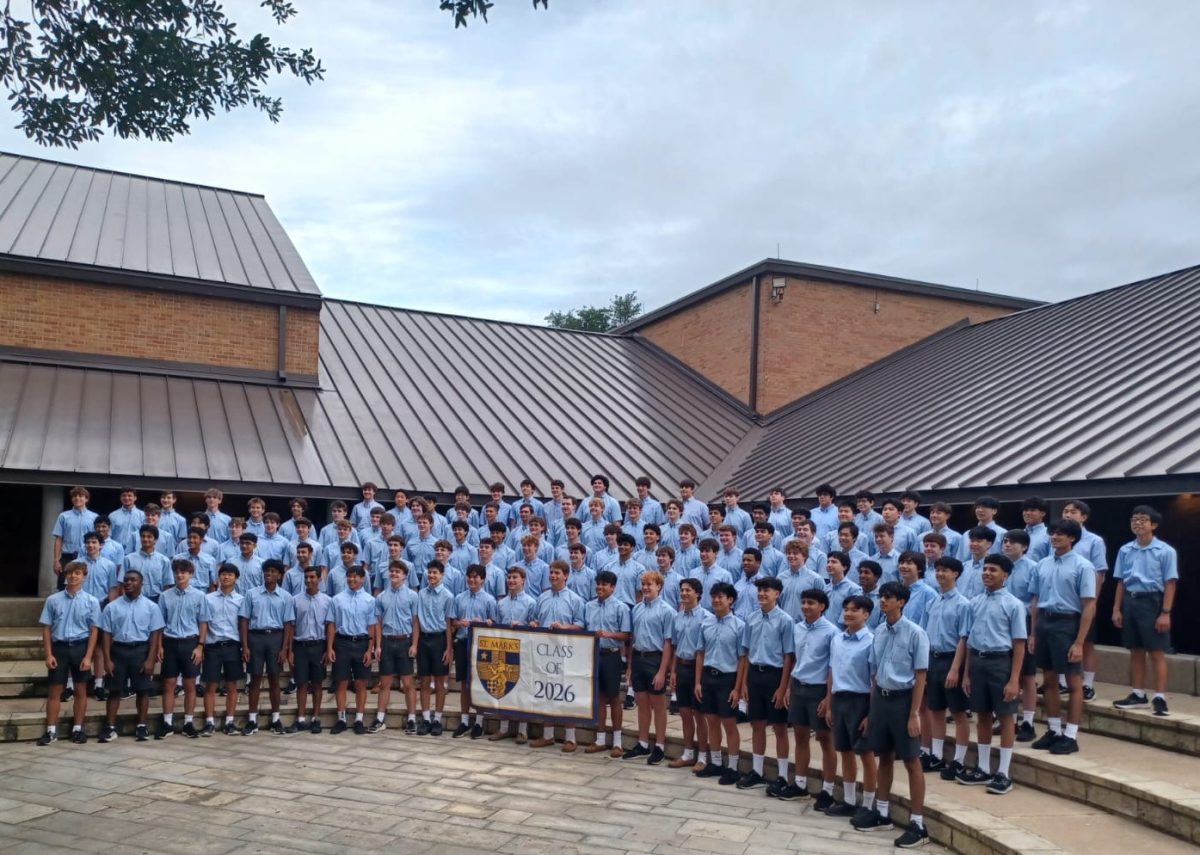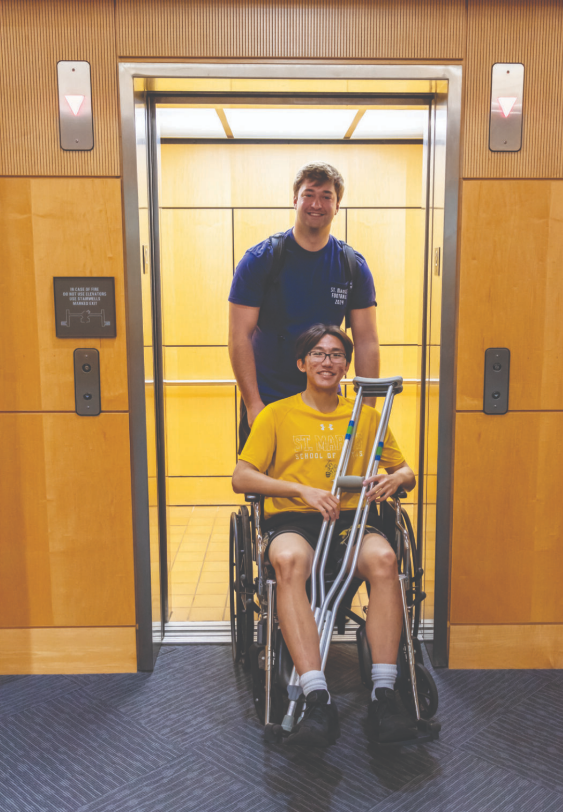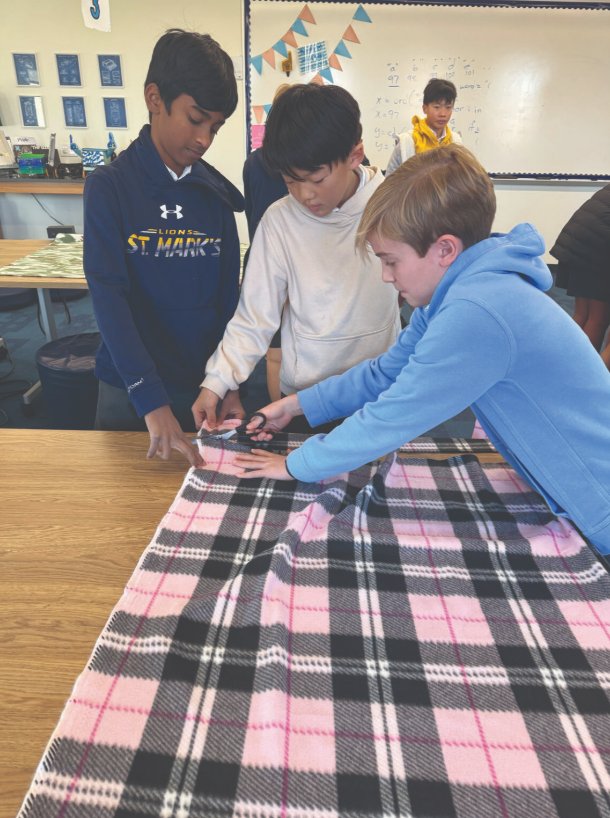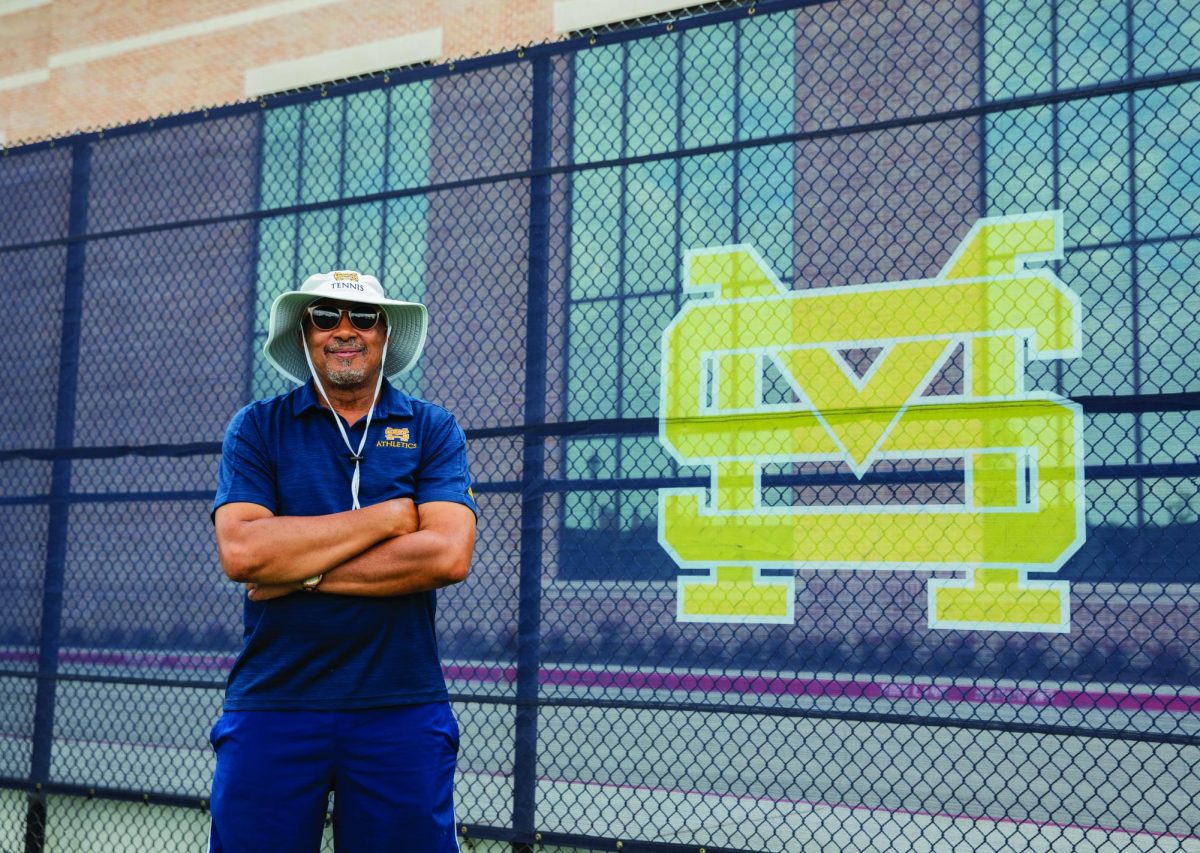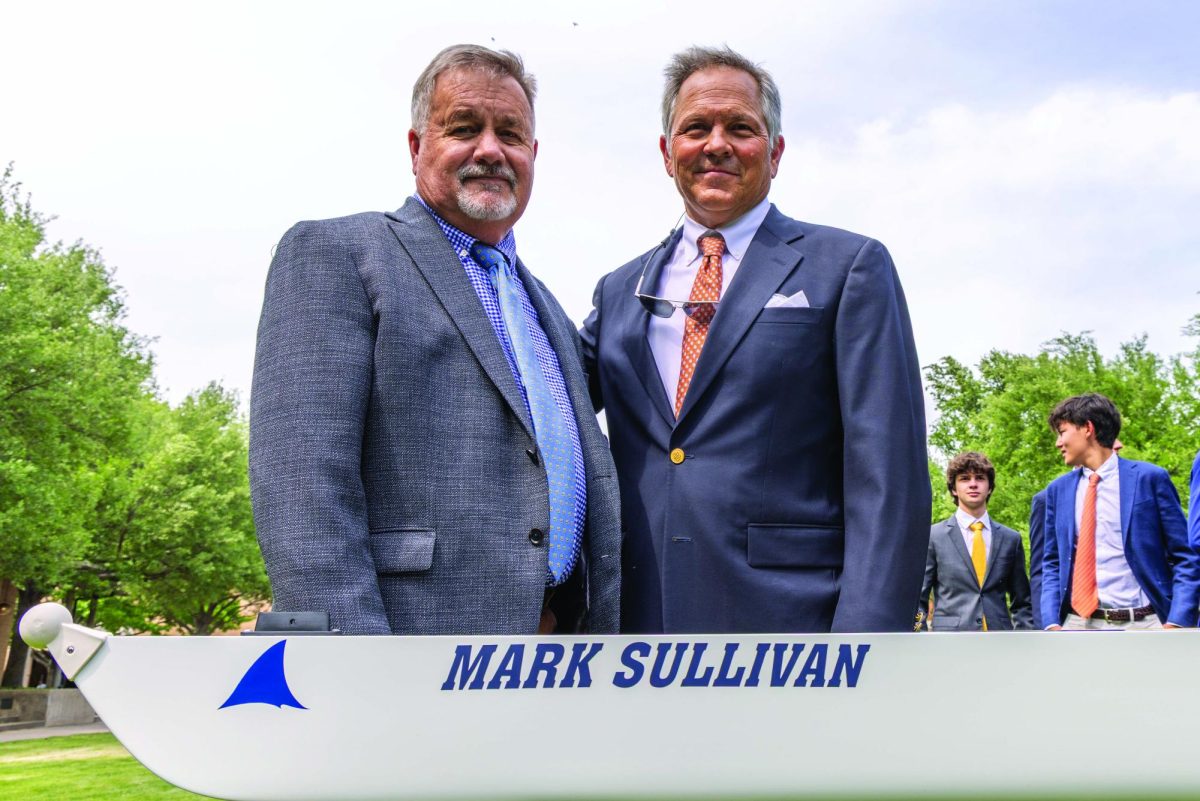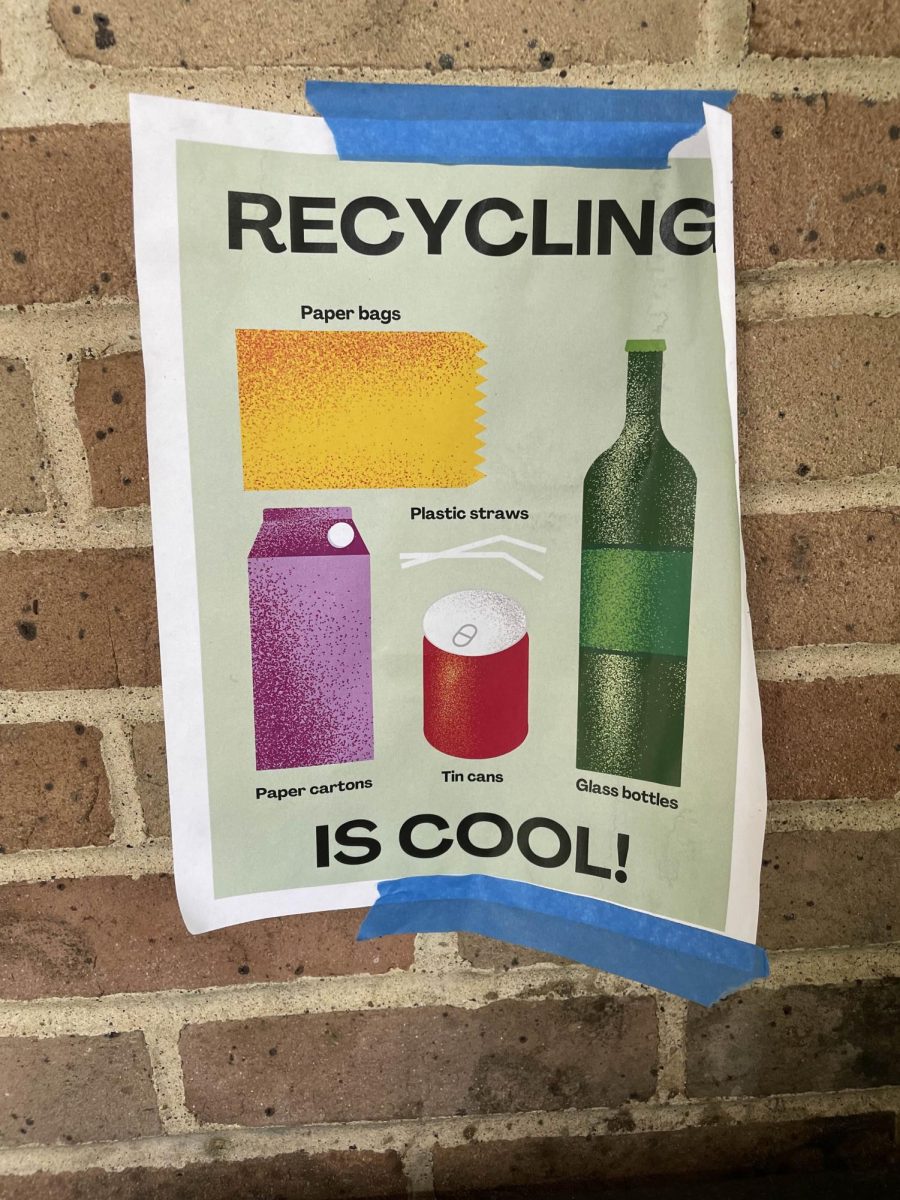Entering the Great Hall at 11 a.m. is like walking into the running of the bulls instead of a high school cafeteria. One inevitably encounters cutting students, food on the floor and escapees with boxed lunches, hurriedly making their way out of the chaos.
At first, it seems like the brotherhood built between students is lost in the race for food. But students see the struggle differently — unwritten rules and rites as old as the cafeteria itself have emerged from the traditions of upperclassmen.
“Seniors go through high school, through three years of pain and work, to get the privilege to cut.” senior CJ Ness said. “You can’t use that privilege when you’re a freshman, sophomore or junior because you can’t understand what it actually means.”
The act of cutting the lunch lines is deeply ingrained in the school’s culture — seniors, who were at one point freshmen, learned from their predecessors that it was a special privilege solely for the senior class.
“After watching several senior classes before me cut in front of me, the fact that we can now cut the line is rewarding,” Ness said. “If there’s any way I can get food faster, I’m going to take that every single time. I never feel guilty. Even if there is guilt, the fact that I’m eating will always take over.”
Underclassmen also acknowledge seniority and look forward to their future privileges.
“When I’m a senior, I’m going to do it,” sophomore Justin Kim said.
Although the unwritten rules of cutting are held up by many students, especially seniors, the tradition also has considerable opposition.
“In a simple phrase, I don’t like cutting,” Assistant Head of Upper School Jason Leneau said. “We think we’re all entitled to get food because we think our days are busier than others.”
Many teachers and faculty members find the seniors’ cutting to be unnecessary and bad-mannered, exactly what seniors should strive to eliminate as the role models of the school.
“The job as upperclassmen should be to set the example,” Leneau said. “And if they’re setting an example that’s less than positive, I think they’re doing themselves a disservice.”
As a reminder to the seniors to be composed in front of underclassmen, teachers often go out of their way to keep seniors from cutting the line.
“I’m absolutely against cutting. In fact, when I see seniors doing it, I tell them not to,” science instructor Dr. Jonathan Moody said. “I will happily station myself near the front of the lines where the seniors like to cut, and I’ll let the boys know that they shouldn’t be doing that. That’s not a privilege. That’s disrespectful.”
Teachers see the lunch period more practically. Although it is a time to talk with each other, it is mainly a time to eat — cutting or not, everyone gets enough food and ample time to eat it. Many teachers see the students’ line cutting as a desire for immediate gratification, but convincing students to give up their time and traditions is a challenge.
“Some teachers get mad at us for cutting, but it’s hard to change,” Ness said.
Unfortunately, another timeless aspect of student culture is the students’ inability to throw their trash away. In the rush to get food and set it down on a table, plates, trays and boxes are often dropped or left on the floor, leaving food scattered across campus. This irresponsibility has led to restrictions on where students can and cannot eat.
“Teachers don’t leave trash on the tables as students do,” Victor F. White Master Teacher David Brown said. “If students can learn to clean up after themselves, they might be granted more privileges.”
Students often advocate for boxed lunches in prohibited areas because they may need to study, do homework or prefer a quieter environment. Teachers, however, can eat wherever they want. But their privileges are backed up by their reputation, unlike with students.
“Adults have a little bit more awareness about those things and take care of their own trash and police their own areas, whereas students kind of eat and run,” Leneau said.
When moving food, spills are inevitable, but some happen in dramatic fashion. Another of the Great Hall’s traditions is to clap and cheer for anyone who makes an example of how not to carry food in the middle of the cafeteria.
Some teachers find the response excessive. Similar to what he thinks of Friday assemblies, Brown believes this tradition contributes to an increasingly rowdy student body. He thinks there should be a place for order and calm in the Great Hall.
“It’s just immaturity, looking for any little diversion that’s out of the ordinary to celebrate,” Brown said. “I think it’s gotten [worse] over the years.”
Although the tradition may put students on the spot, their embarrassment brings other students and teachers closer. Many find it funny, or even a reminder of their school years.
“I think it’s humorous,” Moody said. “I went as an undergrad to Texas A&M, and the tradition there in the food halls is if something drops, immediately all of the students yell ‘Pick it up!’ It’s extremely embarrassing. Hundreds of people will be yelling good-naturedly at you, in unison, to pick it up.”
More than anything, both teachers and students recognize the ability the lunch period has to bring people together, with tradition at its heart.
“In fifth and sixth grade, we would try to finish lunch as quickly as we could and go out and play manhunt,” senior Hudson Brown said. “But now, lunch is a time for me and my friends to talk about the day and to escape from class. Things happen in the lunchroom, for instance, today we had someone drop a tray, and everyone stood up and gave a standing ovation. And it’s those little things that I’ll look back at St. Mark’s and remember.”

